A Dancing Song is any piece of music that compels you to move, and here at ten-dance.com, we celebrate all forms of dance music. From the infectious rhythms of disco to the pulsating beats of techno, we explore the elements that make a song irresistible and get you moving. Whether you’re into hip-hop, funk, or electronic music, our comprehensive guide covers it all. Get ready to groove and discover your next favorite dancing song with tips, techniques, and the latest trends in music culture.
1. What Defines A Dancing Song?
A dancing song is any musical piece that inspires movement, regardless of genre. From The Beatles to Slayer, diverse artists have created music that makes people want to dance. At ten-dance.com, we define a dancing song as one deeply embedded in dance music culture. This culture spans nearly fifty years, constantly evolving, and encompasses a wide array of sub-genres and styles.
Expanding on that definition, a dancing song typically features a compelling rhythm, a memorable melody, and an energy that resonates with dancers. These elements can be found across genres, but the defining factor is the song’s ability to inspire spontaneous movement. According to a study on music and movement from Stanford University in June 2024, “The inherent structure of music, particularly rhythm and tempo, directly influences motor cortex activity, making certain songs naturally conducive to dance.”
2. How Did Dance Music Evolve Over Time?
Dance music evolved from the mid-1970s disco era to include early 1980s club sounds like electro and Latin freestyle. Disco was re-engineered into house music in Chicago and techno in Detroit, leading to the 1990s rave explosion with genres like jungle, trance, gabba, and garage. This evolution continued into the 2000s with EDM and dubstep.
Each of these sub-genres had peak moments of popularity, but they never truly disappeared. Drum ‘n’ bass, for instance, is currently experiencing a resurgence. This constant evolution reflects the diverse tastes and creative innovations within the dance music community. This history is chronicled extensively at ten-dance.com, where we delve into the origins and transformations of each genre.
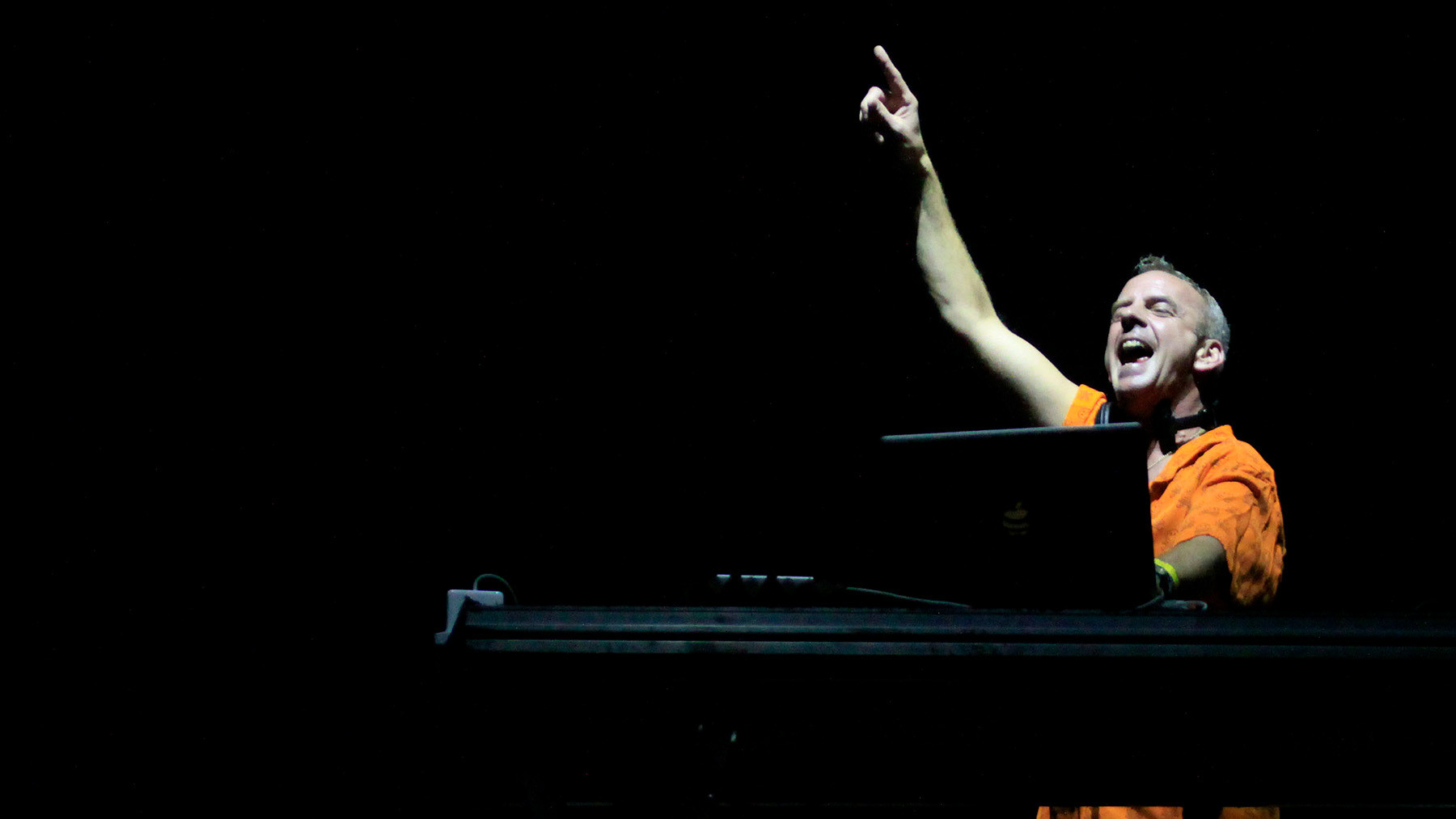 British DJ Fatboy Slim performs a concert at the Pop Music Festival, held at the parking lot of the Federation of Industries of Rio Grande do Sul, in northern Porto Alegre, southern Brazil, on March 15, 2011. Photo: WESLEY SANTOS/AE/AE (Agencia Estado via AP Images)
British DJ Fatboy Slim performs a concert at the Pop Music Festival, held at the parking lot of the Federation of Industries of Rio Grande do Sul, in northern Porto Alegre, southern Brazil, on March 15, 2011. Photo: WESLEY SANTOS/AE/AE (Agencia Estado via AP Images)
3. What Makes A Song Universally Canonical?
A universally canonical dancing song transcends sub-genres and resonates with a broad audience. These songs often intersect with other musical genres like synth-pop, hip-hop, funk, Miami bass, R&B, indie-rock, Latin music, and pop. Artists like Prince, Robyn, Britney Spears, Shakira, and Justin Bieber have created tracks that blend seamlessly into the dance music world.
These tracks stand out due to their unique blend of musical styles and their ability to capture the essence of different eras. They become timeless classics, frequently played and celebrated across various dance floors and musical communities. This is evident in our curated playlists at ten-dance.com, where you can find these canonical tracks alongside contemporary hits.
4. How Has House Music Influenced Mainstream Music?
House music has profoundly influenced mainstream music, particularly with artists like Drake and Beyonce releasing house-inspired records. This trend highlights the cyclical nature of music, where underground genres resurface and impact popular culture. House music’s influence can be heard in various mainstream tracks, blending electronic beats with pop sensibilities.
The infusion of house elements into mainstream music demonstrates the genre’s enduring appeal and its ability to evolve and adapt. It also introduces house music to new audiences, further solidifying its place in music history. At ten-dance.com, we explore this influence through articles, interviews, and features on artists pushing these boundaries.
5. Why Is Donna Summer’s ‘Last Dance’ Considered A Masterpiece?
Donna Summer’s “Last Dance” (1979) is considered a masterpiece due to its innovative structure and emotional depth. Starting as a slow ballad, the song gradually transforms into an energetic disco anthem. This dynamic shift, conceived by Casablanca’s in-house producer Bob Esty, earned it an Oscar for Best Original Song.
The song’s unique tempo shift and Summer’s powerful vocals create an unforgettable experience. It perfectly captures the bittersweet feeling of a night coming to an end, making it a timeless classic in the disco genre. We celebrate this iconic track at ten-dance.com with in-depth analyses and its place in disco history.
6. What Made Fatboy Slim’s ‘The Rockafeller Skank’ So Popular?
Fatboy Slim’s “The Rockafeller Skank” (1998) gained immense popularity because of its infectious energy and innovative blend of breakbeats and guitar riffs. The song’s producer, Norman Cook, combined surf-rock elements with a vocal sample from Lord Finesse, creating a track that was both catchy and unique.
The song’s formula of breakbeats and guitar riffs resonated with a wide audience, making it a staple in clubs and festivals. Its energetic vibe and memorable samples contributed to its status as an anthem of the late 1990s. You can find similar tracks and learn about the influence of Fatboy Slim at ten-dance.com.
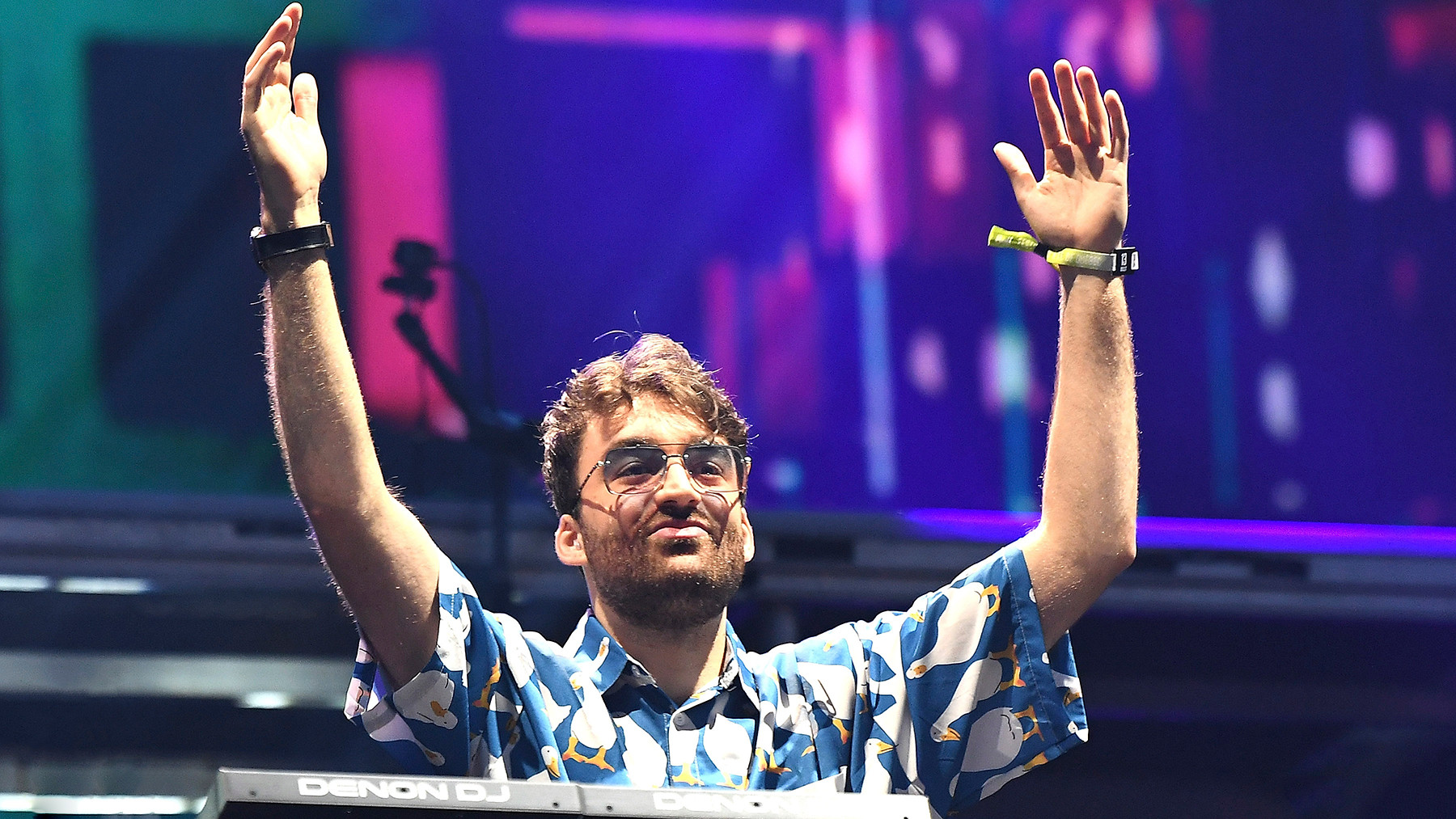 Oliver Heldens
Oliver Heldens
7. What Is Gabber Music, And Why Is Mescalinum United’s ‘We Have Arrived’ Important?
Gabber music, often called techno’s heavy-metal equivalent, is a hardcore electronic dance genre characterized by fast tempos and distorted sounds. Mescalinum United’s “We Have Arrived” (1991), created by Marc Acardipane, is considered the foundational track of gabber. The song’s crushing drums and air-raid noises defined the genre’s aggressive and intense style.
“We Have Arrived” became an anthem in the gabber scene, particularly at raves where its intense energy fueled mosh pits. Its impact on the genre is undeniable, making it a crucial piece in the history of techno and electronic music. Discover more about gabber and its origins at ten-dance.com.
8. How Did Oliver Heldens Change Dance Music With ‘Melody’?
Oliver Heldens changed dance music with “Melody” (2016) by introducing a more classical and melodic approach to the genre. At a time when brute-force build-and-drop dynamics dominated the dance market, Heldens brought a fresh sound with dramatic string swirls and uplifting piano lines.
“Melody” signaled a shift towards airier, more sophisticated dance music. Its blend of classicism and modern bass elements made it a standout track, influencing other producers to explore more melodic and dynamic compositions. Explore this evolution and find similar artists at ten-dance.com.
9. What Makes Kerri Chandler’s ‘Rain’ So Soulful?
Kerri Chandler’s “Rain” (1998) is known for its soulful and emotional depth, primarily because Chandler infused his personal experiences and feelings into the music. As Chandler himself stated, “I write my life’s story and let it out through the music.” The track’s lyrics, punctuated by the word “rain,” convey a sense of longing and vulnerability.
The track’s soulful vocals and teasing music, particularly the xylophone solo, create a unique emotional landscape. This combination of personal storytelling and musical artistry has made “Rain” a lodestone for younger producers and DJs. You can find similar soulful house tracks at ten-dance.com.
10. How Did Detroit Grand Pubahs Create The Unique Sound of ‘Sandwiches’?
Detroit Grand Pubahs created the unique sound of “Sandwiches” (2000) through improvisation and collaboration. Andy Toth created a buzzy electro track, and Mack Goudy Jr. improvised lyrics about a dance-floor three-way. This spontaneous approach resulted in a sleazy and absurdly limber track that became a global club hit.
The unexpected nature of the song, combined with its catchy rhythm and provocative lyrics, made it an instant classic in Detroit’s electro renaissance. Its success highlights the power of improvisation and collaboration in creating unique and memorable music. Discover more about Detroit’s electro scene at ten-dance.com.
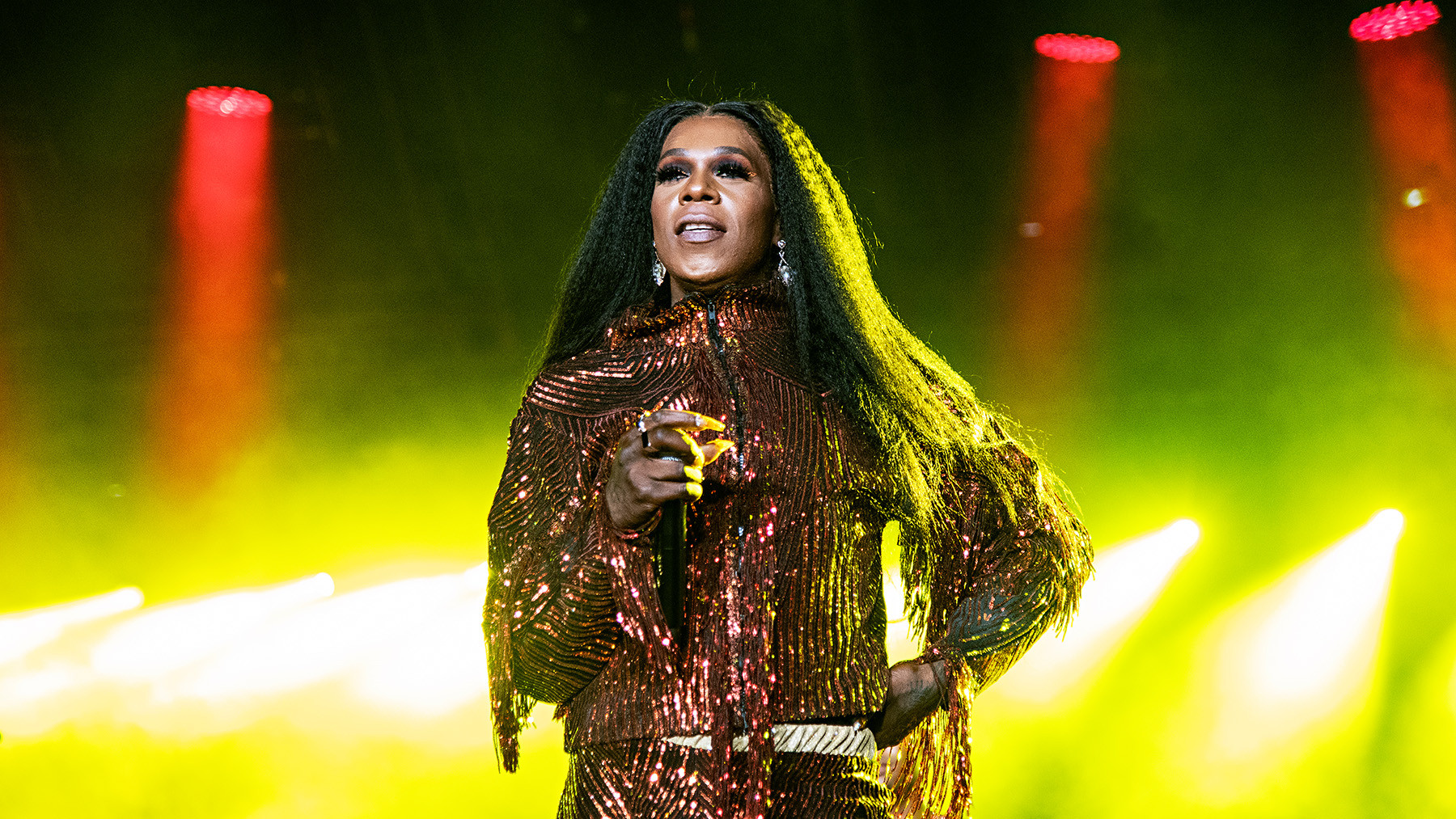 Big Freedia performs at the 2019 Essence Festival at the Mercedes-Benz Superdome, Sunday, July 7, 2019, in New Orleans. (Photo by Amy Harris/Invision/AP)
Big Freedia performs at the 2019 Essence Festival at the Mercedes-Benz Superdome, Sunday, July 7, 2019, in New Orleans. (Photo by Amy Harris/Invision/AP)
11. What Controversies Surrounded Black Box’s ‘Everybody Everybody’?
Black Box’s “Everybody Everybody” (1990) gained notoriety due to controversies surrounding the uncredited vocals of Martha Wash. Wash was hired to sing demos, but her vocals were used in the final track without credit. The group then hired a model to lip-sync Wash’s vocals in the music videos.
Wash sued Black Box and C+C Music Factory (who did the same thing), winning settlements in both cases. This controversy brought attention to the ethical issues in the music industry regarding vocal credits and representation. Learn more about this controversy and other ethical discussions at ten-dance.com.
12. How Did Big Freedia Popularize Bounce Music With ‘Azz Everywhere’?
Big Freedia popularized bounce music with “Azz Everywhere” (2010) by capturing the genre’s high-energy and raucous sound. The track’s riot of snares, samples, and shouted phrases became synonymous with the New Orleans club scene. Big Freedia’s promotion of bounce music helped it reach a global audience.
As Big Freedia explained, “We describe it as an uptempo, heavy bass, holler-response music. And it definitely has a lot to do with azz shaking” “Azz Everywhere” broke the sound wide and made twerking popular. Find similar bounce tracks and explore the New Orleans music scene at ten-dance.com.
13. What Made Joy Orbison’s ‘Hyph Mngo’ Such A Breakthrough Dubstep Track?
Joy Orbison’s “Hyph Mngo” (2009) was a breakthrough dubstep track because it captured the freewheeling spirit of the late 2000s dubstep scene. The song’s gliding bass line, plastic-sounding synthesizers, and ricocheting snare drum created a heart-tugging feel that was rare for dubstep at the time.
The track’s unique combination of smooth and edgy elements helped it cross over into the mainstream. Its success highlighted the evolving nature of dubstep and its potential for emotional depth. Explore the evolution of dubstep at ten-dance.com.
14. How Did ESG Influence New York’s Dance Music Scene With ‘Moody’?
ESG influenced New York’s dance music scene with “Moody” (1981) by blending funk and disco grooves with a sparse, percussion-heavy sound. Their unique style resonated with post-punk and no-wave clubs, especially after enlisting Joy Division producer Martin Hannett for their debut EP.
“Moody” became a centerpiece of their work, sounding like a futuristic blend of bass, bongo drums, and Renee Scroggins’ distant vocals. ESG’s impact on dance music lies in their ability to fuse different genres and create a sound that remains timeless. Delve into the history of New York’s dance scene at ten-dance.com.
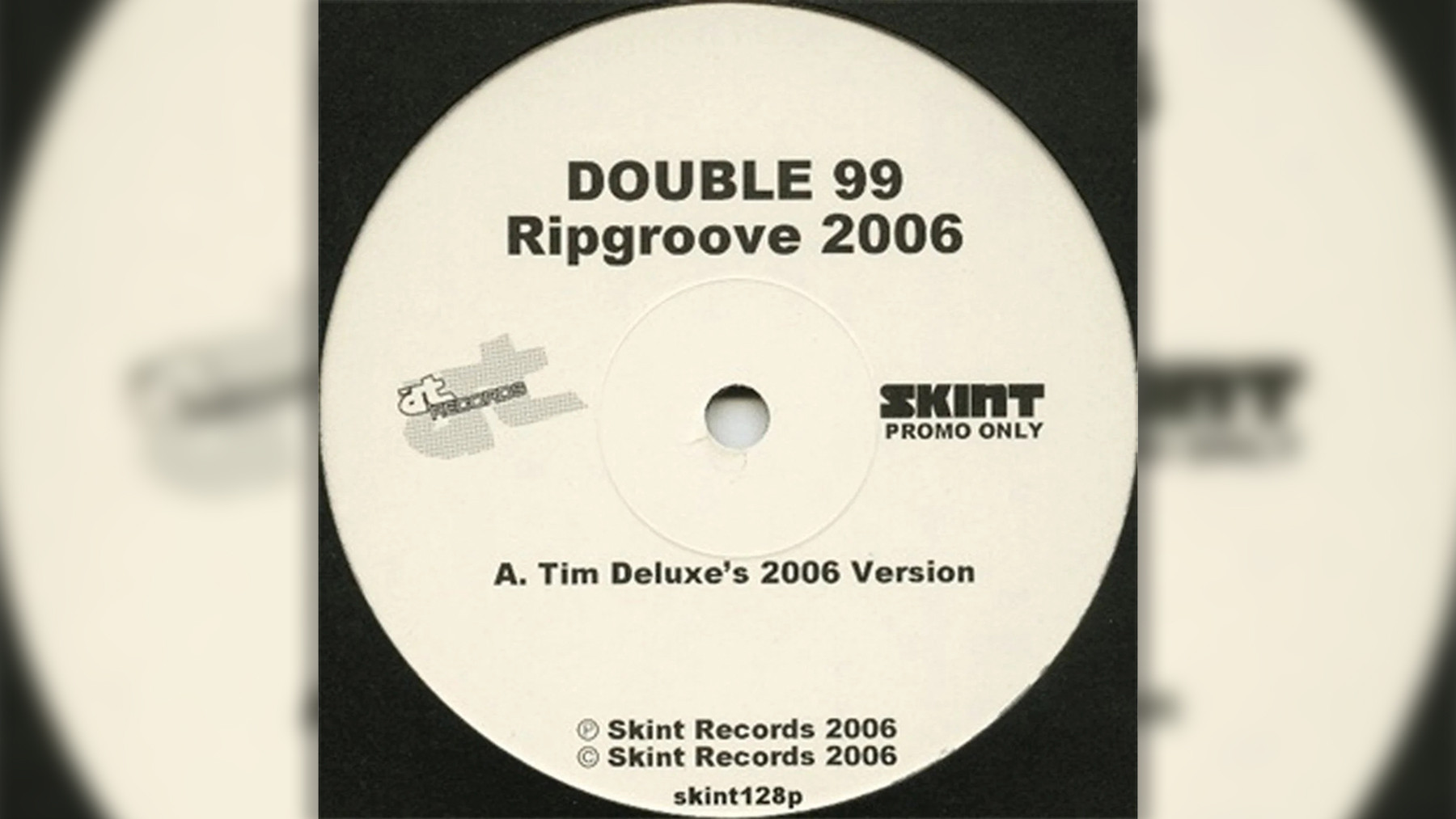 Double 99
Double 99
15. How Did Skream’s Remix of La Roux’s ‘In For The Kill’ Transform The Original Song?
Skream’s remix of La Roux’s “In for the Kill” (2009) transformed the original mid-tempo synth-pop single by intensifying its atmosphere and adding drum-and-bass breaks. La Roux’s Elly Jackson credited Skream for capturing the song’s true essence, saying it “regave birth to the real meaning and atmosphere of the song as we wrote it.”
Skream flattened the synths, creating tension that was then released with hurtling drum-and-bass beats. This remix showcased Skream’s ability to reimagine a song, making it more dynamic and danceable. Explore remixes and transformations in dance music at ten-dance.com.
16. What Role Did Double 99’s ‘RIP Groove’ Play In Popularizing UK Garage?
Double 99’s “RIP Groove” (1997) played a crucial role in popularizing UK garage by combining samples from Armand Van Helden and Kenny Dope with singer Tina Moore. The track’s catchy rhythm and innovative use of samples helped it become one of the biggest tunes of 1997, putting UK garage (then dubbed “speed garage”) on the pop charts.
“RIP Groove” announced the arrival of a new sound and helped bring UK garage into the mainstream. Its impact on the genre is undeniable, making it a key track in the history of dance music. Learn more about the UK garage scene at ten-dance.com.
17. How Did Snap!’s ‘The Power’ Influence Europop?
Snap!’s “The Power” (1990) became a blueprint for Europop by combining elements of rap, R&B, and dance music. The song’s success led to many groups adopting a similar formula, with rapping, singing choruses, and returning to the rap. Michael Muenzing of Snap! noted in 1994 that there were “50 or 60 groups singing this way.”
“The Power” demonstrated the potential of blending different genres to create a commercially successful sound. Its influence on Europop is evident in the numerous tracks that followed its formula, solidifying its place in music history. Discover more Europop hits at ten-dance.com.
18. What Defines Jersey Club Music, And How Does DJ Frosty’s ‘Ride That Wave (Remix)’ Exemplify It?
Jersey club music is defined by bristling, syncopated grooves, clipped vocal samples, and a feel that’s visceral but never violent. DJ Frosty’s “Ride That Wave (Remix)” (2010) exemplifies this with its relentlessly catchy chant-along banger. The remix features Fatman Scoop, whose hip-hop cut-ups were favorites of DJs like Armand Van Helden and Fatboy Slim.
Originating in Newark, New Jersey, Jersey club’s unique sound has been picked up by EDM producers worldwide. “Ride That Wave” showcases the genre’s energetic and catchy nature, making it a standout track. Explore more about Jersey club at ten-dance.com.
 Tate Kobang – AUSTIN, TX – MARCH 17: Tate Kobang performs onstage at the Youtube Music Showcase on March 17, 2016 in Austin, Texas. (Photo by Thomas M Jackson/Redferns)
Tate Kobang – AUSTIN, TX – MARCH 17: Tate Kobang performs onstage at the Youtube Music Showcase on March 17, 2016 in Austin, Texas. (Photo by Thomas M Jackson/Redferns)
19. Why Is Todd Terje’s “Inspector Norse” So Irresistible?
Todd Terje’s “Inspector Norse” (2012) is irresistible because of its amiably ambling rhythm and wiggly tune, all created from sounds generated by a vintage ARP synthesizer. Terje didn’t expect the track to take off, but its catchy melody proved irresistible.
The track’s unique sound and danceable beat made it a hit among DJs and listeners alike. Its popularity helped Terje gain recognition as a DJ and producer. Discover more nu-disco tracks at ten-dance.com.
20. What Made The Rapture’s “House of Jealous Lovers” A Seminal Dance-Punk Track?
The Rapture’s “House of Jealous Lovers” (2002) is a seminal dance-punk track because it successfully merged rock and dance music elements. The song’s Gang of Four-style guitar slashing, maniacal shout-along vocals, and sick beat were engineered to appeal to both rock and dance music fans. James Murphy of DFA Records noted the sacrilegious nature of the combination at the time.
The track’s success launched the dance-punk movement in New York, influencing many new bands to incorporate elements of both genres. Explore the dance-punk movement at ten-dance.com.
21. How Did TNGHT’s “Higher Ground” Influence Trap Music?
TNGHT’s “Higher Ground” (2012) influenced trap music with its frisky, floor-focused take on big American rap beats. Hudson Mohawke described their EP as a “take on big American rap beats, with a little bit of cheekiness to it.” The jeweled-elephantine stomp of “Higher Ground” is cavernous and detailed.
Within a year, Kanye West enlisted TNGHT to produce “Blood on the Leaves” from Yeezus. The track’s unique sound and production style helped shape the future of trap music. Find more trap tracks and learn about its evolution at ten-dance.com.
22. How Did Roni Size And Reprazent Fuse Jazz-Funk With Drum And Bass In “Brown Paper Bag”?
Roni Size and Reprazent fused jazz-funk with drum and bass in “Brown Paper Bag” (1997) by blending frenetic beats with warm, organic jazz-funk influences. This approach allowed them to create drum and bass that felt exploratory and expansive while maintaining its Black roots.
The track’s double-bass driven sound and jazz elements set it apart from other drum and bass tracks, appealing to a broader audience. Roni Size noted that the track “split people” due to its unique sound. Explore more drum and bass tracks at ten-dance.com.
 The Human League Don
The Human League Don
23. How Did Soul II Soul’s “Back To Life” Achieve Mainstream Success?
Soul II Soul’s “Back to Life (However Do You Want Me)” (1989) achieved mainstream success through its supple grooves that melded reggae and soul with unhurried grace. Initially intended for their sound system, the track’s unique sound caught the attention of a wider audience.
The song hit Number One on the Billboard R&B chart and went Top Five on the Hot 100, showcasing the group’s ability to create music that resonated with both R&B and pop fans. Discover more tracks from Soul II Soul at ten-dance.com.
24. How Did Felix Da Housecat’s “Silver Screen Shower Scene” Define Electroclash?
Felix da Housecat’s “Silver Screen Shower Scene” (2001) defined electroclash with its celebrity-tweaking lyrics and music. The track seemed to call forth the entire electroclash epoch by itself. Jacques Lu Cont’s “Thin White Duke Remix” was even more popular with DJs.
The track’s quasi-conceptual work about celebrity and artifice made it an instant anthem. Its influence on electroclash is undeniable, making it a key track in the genre’s history. Learn more about electroclash and its defining tracks at ten-dance.com.
25. How Did Dntel and Ben Gibbard Create a Dreamlike Atmosphere in “(This Is) The Dream of Evan and Chan (Superpitcher Kompakt Remix)”?
Dntel and Ben Gibbard created a dreamlike atmosphere in “(This Is) The Dream of Evan and Chan (Superpitcher Kompakt Remix)” (2001) by combining Gibbard’s dreamy lyrics with scampering beats and buzzing synths. The remix by Superpitcher featured foggy, fuzzy synth overlays and ricocheting bells, achieving the dream state the lyrics only hint at.
The track’s ethereal sound and Gibbard’s vocals created a unique and memorable listening experience. Its dreamlike quality has made it a standout track in the electronic music genre. Explore more tracks with ethereal atmospheres at ten-dance.com.
26. What Made Patrick Cowley And Sylvester’s “Do Ya Wanna Funk?” A Landmark Hi-NRG Track?
Patrick Cowley and Sylvester’s “Do Ya Wanna Funk?” (1982) is a landmark Hi-NRG track due to its pealing synth riffs and Sylvester’s stratospheric falsetto. Cowley’s innovative synth work and Sylvester’s powerful vocals created a track that was both energetic and groundbreaking.
The track also provided one of the great movie needle drops when it soundtracked the party scene in Trading Places. Its lasting impact on dance music is undeniable. Discover more Hi-NRG tracks at ten-dance.com.
 Squarepusher – NOTTINGHAM, UNITED KINGDOM – MARCH 29: (EXCLUSIVE ACCESS) Squarepusher performs a one off show on stage at Rescue Rooms on March 29, 2013 in Nottingham, England. (Photo by Ollie Millington/Redferns via Getty Images)
Squarepusher – NOTTINGHAM, UNITED KINGDOM – MARCH 29: (EXCLUSIVE ACCESS) Squarepusher performs a one off show on stage at Rescue Rooms on March 29, 2013 in Nottingham, England. (Photo by Ollie Millington/Redferns via Getty Images)
27. How Did Funkadelic Unite People Through Music With “One Nation Under A Groove”?
Funkadelic united people through music with “One Nation Under a Groove” (1978) by creating an instantly appealing undertow that put it atop the R&B singles chart for six weeks. George Clinton’s decision to assign the song to Funkadelic gave it heft, as he explained, “Parliament is smashing, but Funkadelic is the movement.”
The track’s infectious rhythm and message of unity made it a hit across different audiences. Its lasting impact on music is undeniable. Explore more tracks with messages of unity at ten-dance.com.
28. How Did Evelyn Thomas’ “High Energy” Give Hi-NRG Its Name?
Evelyn Thomas’ “High Energy” (1984) gave Hi-NRG its name, but it was hardly the first of its kind. Released in April 1984, the track became a staple in gay clubs and was brash, cheerful, and irresistibly cheesy. Producer Ian Levine straddled both gay disco and old Motown, the two main Hi-NRG ingredients.
The track reached the British Top Five and still smashes it, as the DJ-producer Black Madonna showed on her Bunker Podcast. Its lasting impact on dance music is undeniable. Discover more Hi-NRG tracks at ten-dance.com.
29. What Made Daft Punk’s “Get Lucky” Such A Global Phenomenon?
Daft Punk’s “Get Lucky” (2013) became a global phenomenon because of its collaboration with Pharrell Williams and Nile Rodgers, creating a track that was both catchy and innovative. Williams channeled Nile Rodgers, and the robots played him the track they’d cut with Rodgers. Williams cut his coconut-oil-smooth vocal on that visit. As Williams said, “You don’t need MDMA for this music, because it’s so incredibly vivid.”
The track’s unique sound and production style helped it become a hit across different audiences. Its lasting impact on music is undeniable. Explore more tracks from Daft Punk at ten-dance.com.
30. How Did Mat Zo And Porter Robinson Pay Homage To Daft Punk With “Easy”?
Mat Zo and Porter Robinson paid homage to Daft Punk with “Easy” (2013) by incorporating disco chords reminiscent of Daft Punk’s Discovery album. Robinson said, “‘Easy’ in my mind is an homage to Daft Punk’s Discovery. It takes the disco chords of all of the early French stuff and gives it a louder, more trance-inspired feel.”
The track’s expert updating and classicist sound made it a standout. The central synth line evokes a Theremin as much as a Moog, and the vocal line (sampled from Colourblind’s NYC garage classic “Nothing Better”) has the heart-in-throat feel that eluded so much of the era’s stadium EDM. Its lasting impact on dance music is undeniable. Discover more tracks inspired by Daft Punk at ten-dance.com.
31. How Did Justice Redefine Remixing With “We Are Your Friends”?
Justice redefined remixing with “We Are Your Friends” (2006) by creating a jagged blare that perfectly bridged electroclash and EDM. Gaspard Augé and Xavier de Rosnay entered a contest to remix the British rockers Simian’s “Never Be Alone.” They downloaded just the voice on the chorus and created a sound that launched their career as Justice.
The track’s unique sound and production style helped it become a hit across different audiences. Its lasting impact on dance music is undeniable. Explore more remixes from Justice at ten-dance.com.
32. How Did Martin Garrix’s “Animals” Dominate The EDM Scene?
Martin Garrix’s “Animals” (2013) dominated the EDM scene with its swarming synth vamp so catchy that people chanted along with it. Built around a simple yet infectious melody, the track became an instant worldwide smash. Garrix was only 18 when he issued it.
The track’s unique sound and production style helped it become a hit across different audiences. Its lasting impact on dance music is undeniable. Discover more tracks from Martin Garrix at ten-dance.com.
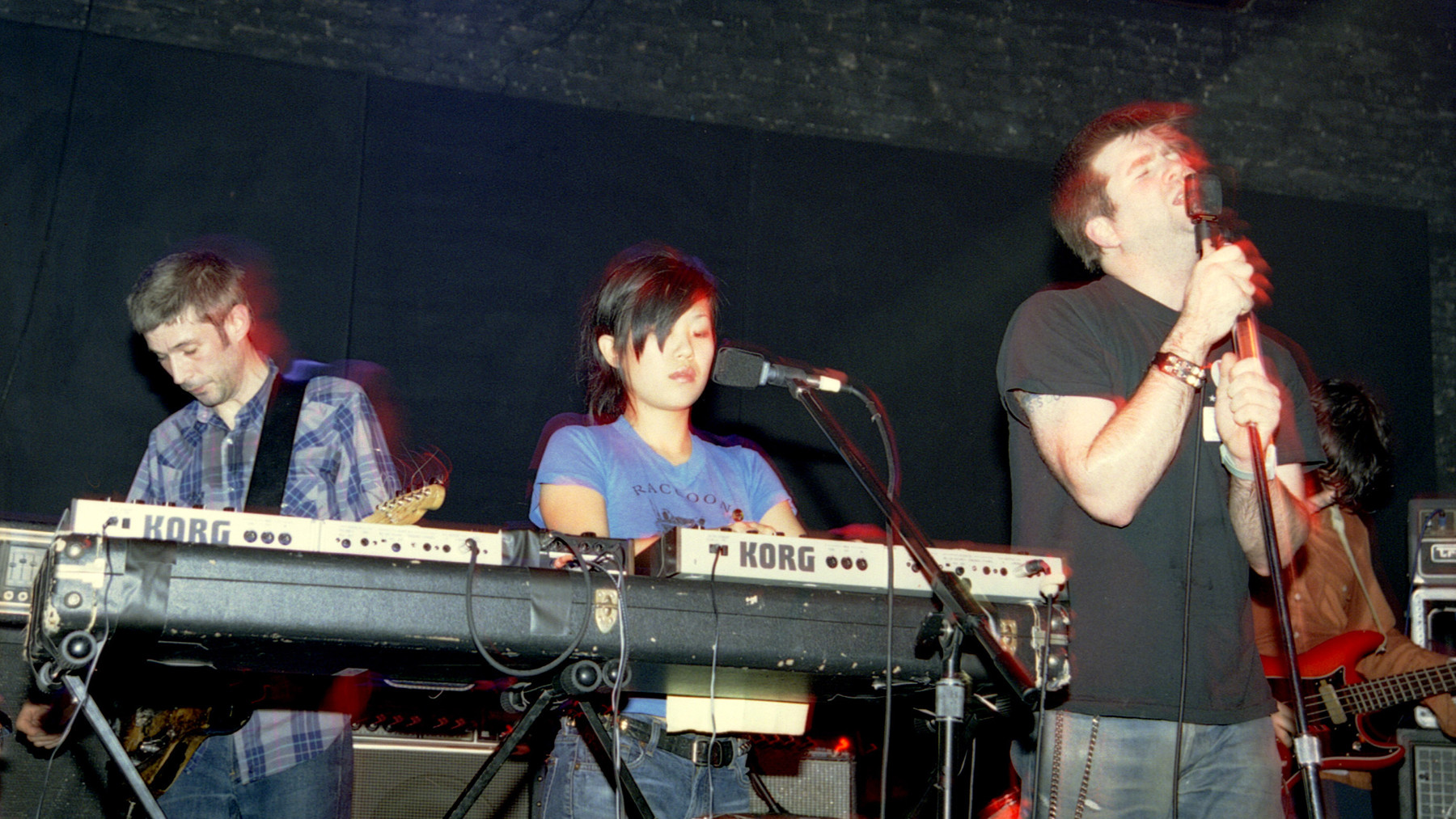 LCD Sound System – UNITED STATES – DECEMBER 14: BOWERY BALLROOM Photo of LCD SOUNDSYSTEM, LCD Soundsystem performing at Bowery Ballroom NYC on December 14 2002 (Photo by David Corio/Redferns)
LCD Sound System – UNITED STATES – DECEMBER 14: BOWERY BALLROOM Photo of LCD SOUNDSYSTEM, LCD Soundsystem performing at Bowery Ballroom NYC on December 14 2002 (Photo by David Corio/Redferns)
33. How Did Debbie Deb’s “Lookout Weekend” Define Freestyle Music?
Debbie Deb’s “Lookout Weekend” (1984) defined freestyle music with its airy, hyper tracks that bridged the gap between KC and the Sunshine Band and 2 Live Crew. Miami production pioneer Pretty Tony coined the phrase. “As far as I know, I coined the phrase. I hadn’t heard anybody call it freestyle music prior to me coming up with the name of the group Freestyle,” he said in 2015.
Like its predecessor, “When I Hear Music,” “Weekend” went triple platinum. In response, Tony said, “I bought me a Porsche. As a matter of fact, two Porsches.” Its lasting impact on dance music is undeniable. Explore more freestyle tracks at ten-dance.com.
34. How Did Tate Kobang Pay Tribute To Baltimore Club Music With “Bank Rolls”?
Tate Kobang paid tribute to Baltimore club music with “Bank Rolls” (2015) by building around a sample of Tim Trees’ Baltimore club sample “Bank Roll.” The then-23-year-old rapper’s remix is a fine modern tribute to Charm City, its people, its perseverance, and most of all, its energy.
In his last verse, he even shouts out K-Swift, the legendary DJ who helped bring Baltimore club music into the mainstream before her untimely death in 2008. Just like K-Swift’s work before it, “Bank Rolls (Remix)” helped introduce a whole new audience to the underground Baltimore sound. Explore more Baltimore club music at ten-dance.com.
35. How Did Soft Cell Combine Northern Soul And Synth-Pop In “Tainted Love/Where Did Our Love Go?”?
Soft Cell combined Northern soul and synth-pop in “Tainted Love/Where Did Our Love Go?” (1981) by creating a synth-pop version of the Gloria Jones R&B stomper “Tainted Love” and sliding that song into another classic from the same era by the Supremes. Marc Almond explained, “We both like Northern soul, Sixties music, and the 12-inch record.”
The whole nine-minute medley — New Wave disco in a nutshell — has hypnotized dance floors ever since. Its lasting impact on dance music is undeniable. Explore more tracks that combine different genres at ten-dance.com.
36. How Did The Orb Create An Ambient Masterpiece With “Little Fluffy Clouds”?
The Orb created an ambient masterpiece with “Little Fluffy Clouds” (1990) by combining an interview with Rickie Lee Jones describing the starry Arizona skies of her youth with Steve Reich’s Electric Counterpoint. Alex Paterson received a tape from a friend, with a note: “This might be a good idea for a new Orb single.”
When Paterson put them together, he got “Little Fluffy Clouds,” the cuddliest record of the acid-house era. Reich “was very happy when he heard it,” Paterson said. “Suddenly, it was being played to the masses, and they were loving it.” Its lasting impact on dance music is undeniable. Discover more ambient tracks at ten-dance.com.
37. How Did Squarepusher Bend Drum And Bass With “My Red Hot Car”?
Squarepusher bent drum and bass with “My Red Hot Car” (2001) by twisting drum-and-bass’s frenzied athleticism into aural pretzel logic, turning it definitively undanceable and infusing it with a whiff of collegiate superiority. Tom Jenkinson twisted drum-and-bass’s frenzied athleticism into aural pretzel logic.
The cut-up vocals and glitch-heavy production of “My Red Hot Car” aren’t mere abstraction — the flickering trickery alternates with cunning negative space, all delineating a crowd-moving groove featuring Jenkinson’s friskiest bass line. Its lasting impact on dance music is undeniable. Explore more experimental tracks at ten-dance.com.
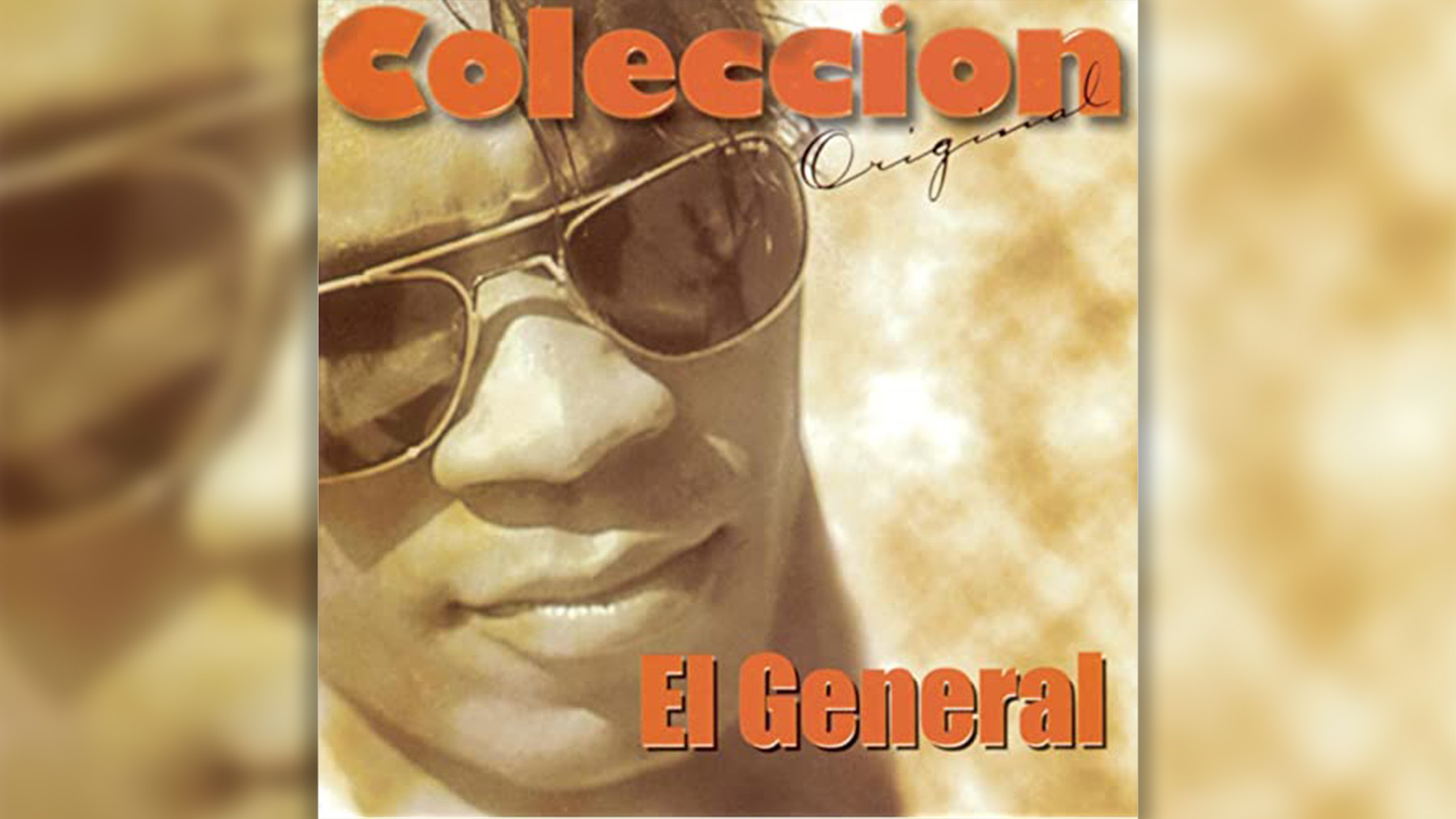 El General
El General
38. Frequently Asked Questions (FAQ) About Dancing Songs
- What makes a good dancing song? A good dancing song has a compelling rhythm, a memorable melody, and an energy that makes you want to move.
- What are some popular genres of dancing songs? Popular genres include disco, house, techno, hip-hop, funk, EDM, and Latin music.
- How has dance music evolved over the years? Dance music has evolved from disco in the 1970s to include various sub-genres like electro, house, techno, and EDM.
- Who are some influential artists in dance music? Influential artists include Donna Summer, Fatboy Slim, Daft Punk, and many more.
- What is the difference between house and techno music? House music typically has a soulful vibe, while techno is more industrial and repetitive.
- What is Hi-NRG music? Hi-NRG is a synthed-up gay-club staple known for its high energy and fast tempos.
- What is freestyle music? Freestyle music is an airy, hyper style that bridged the gap between KC and the Sunshine Band and 2 Live Crew.
- What is gabber music? Gabber music is a hardcore electronic dance genre characterized by fast tempos and distorted sounds.
- What is Jersey club music? Jersey club music is defined by bristling, syncopated grooves and clipped vocal samples.
- How can I find new dancing songs? Check out ten-dance.com for curated playlists, artist features, and genre explorations.
Ready to explore the world of dancing songs? Visit ten-dance.com today to discover new music, learn about dance techniques, and connect with a community of dance enthusiasts. Whether you’re a beginner or a professional, ten-dance.com has something for everyone.
Address: 60 Lincoln Center Plaza, New York, NY 10023, United States
Phone: +1 (212) 769-7000
Website: ten-dance.com
